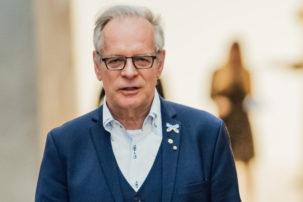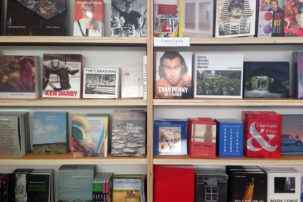As Canada grapples with the continuing impact of COVID-19, it’s clear that the crisis is going to affect the non-profit arts sector in significant ways. Already, there have been major layoffs at the Glenbow Museum and the Banff Centre for Arts and Creativity.
On Monday the federal government and the Canada Council for the Arts announced new relief measures that could help the not-for-profit culture sector weather wider economic impacts.
This week Prime Minster Justin Trudeau announced that the Canada Emergency Wage Subsidy would expand to include non-profits and charities. The program temporarily covers up to 75% of employee wages for qualifying organizations, who must demonstrate revenues have decreased at least 30% due to COVID-19.
And the Canada Council for the Arts announced it would “provide approximately $60 million in advance funding, the equivalent of 35% of annual grants held by over 1,100 core funded organizations.” By May 4, organizations already core-funded by the Canada Council will receive partial advances of their grant payments to help “meet their immediate commitments, help ensure cash flow and address outstanding payments to the artists and cultural workers they employ.”
Simon Brault, director and CEO of the Canada Council for the Arts, believes the new federal wage subsidy will help arts organizations. “I think it will cover many of the organizations in the cultural sector,” says Brault. “Not all of them. I think it should have an impact, but we will need to measure it fast.”
Brault hopes the Council’s advance grant payments will also “give some oxygen” to arts organizations struggling right now and provide “some bridging capacities for organizations” to apply to the other economic supports becoming available.
Advocacy groups for the gallery, museum and artist-run centre sectors say the new federal support is welcome, but some are still waiting on sector-specific help. Vanda Vitali, executive director and CEO of the Canadian Museums Association (CMA), says the new wage supports are helpful, but only to a point.
“We expect it will be helpful to museums, as they operate on very thin margins,” Vitali said. “That being said, while it is an important step in the right direction, it is not enough to address the problem, as it only tackles employee wages and doesn’t address issues such as lost revenues due to closures, the potential impact of closures on the safeguarding of collections, or the support needed to digitize collections.”
Vitali says she has seen instances of great need in Canada’s museums sector these past few weeks. “I can tell you that both I and the president of our Board of Directors, Prof. Jack Lohman, are utterly inundated, day and night, with desperate calls and messages from members of the museum community across Canada.”
Vitali says she and her members would like to see further measures—“a dedicated museum relief fund to support lost revenues and an emergency development fund for museum digital activities”—as many museums are having to heavily pivot to digital, and likely will for some time.
Vitali’s concerns were echoed by Zainub Verjee, executive director of the Ontario Association of Art Galleries, who responded via email. “Digitization of collections is a complex process. It is not as simple as a 360-degree real estate solution! The capacity to engage audiences online is not developed in the sector…it can take from 2 weeks to 24 weeks…to create digital resources.”
Verjee appreciates the new federal wage subsidy, but is concerned the federal government is being guided by a limited model.
“The box-office model, if I may put it so, is driving the relief package from federal and provincial government and its agencies in announcing the relief measures,” Verjee says. “This puts the performance arts sector in the foreground as the visual arts sector struggles to have a voice at the table.”
Moira McCaffrey, executive director of the Canadian Art Museum Directors Organization (CAMDO), confirmed that the new support announced this week is welcome—underlining that, while the sector still has needs, her members understand the health of Canadians’ needs to be the first priority.
“We think the wage subsidy is a bold move on the part of government to keep people working,” McCaffrey added. “In the museum world, over half the costs of operating have to do with wages. As of today, our members are waiting for confirmation of whether or not they will be eligible for this program, so at this time, there is a lot of concern about many institutions’ ability to continue operating in both the short term and long term.” (The federal government had originally said information would be available Tuesday, then pushed that back; more information was posted Wednesday, but further details on the how to apply and how to calculate pre-crisis remuneration are still unclear.)
“We are still calling for sector-specific relief for the Canadian art gallery and museum world,” adds McCaffrey, “support that will strengthen the larger arts and culture ecosystem including working artists.”
Not all arts organizations will experience the economic impact in the same way. Artist-run centres, which run on already-thin margins and are largely core-funded by arts councils, may be able to recover or continue programming more easily.
“Core-funded organizations are the most resilient in periods of crisis and are in the best position to maintain their budgeted commitments, including salaries,” says Anne Bertrand, director of the Artist-Run Centres and Collectives Conference (ARCA) via email. Artist-run centres “can quickly adapt to changing circumstances,” Bertrand says. “They are designed to support artistic experimentation, capitalized later by institutions. That’s the recognized, implicit value [of ARCs] to the arts sector.”
Bertrand’s recent survey of ARCA members indicates “a definite concern for the long-term ripple effects on small organizations that are already struggling to diversify revenues from other private sources such as gaming, sponsorships, fundraising, rentals, sales and conference registrations, that will have an impact as well.”
When asked about whether more action is needed to help self-employed and freelance workers, Simon Brault of the Canada Council admitted work may still be needed on supports to the arts sector. “One thing we flagged to the government is that the workforce of many of those not-for-profit organizations is really a mix of employees, and contractual and self-employed workers,” says Brault. “We are also concerned with the situation of individual artists who have minimal revenue related to their creative work. It would be sad, for example, if an artist receiving $1,000 for a performance in the context of the Facebook initiative led by the National Arts Centre would be excluded from the [emergency] allocation for two weeks.”
“We are in constant discussion with the government, mainly through Minister Guilbeault’s office, to make sure we explain the specificities of the sector,” adds Brault. “I still believe there will be some instances where tailored measures for the arts sector may be needed, and it is for the government to make that decision. The file is not closed.”

 Prime Minister Justin Trudeau speaking at a coronavirus-related press conference. Photo: PMO.
Prime Minister Justin Trudeau speaking at a coronavirus-related press conference. Photo: PMO.







